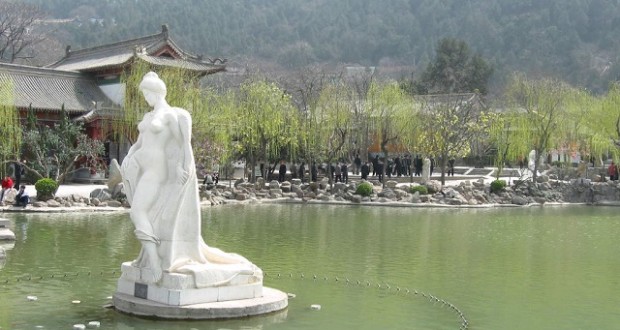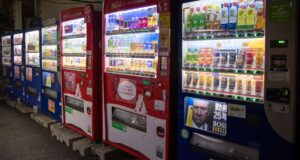My first stop: Huaqing Pool
Huaqing Pool is located in the north side of the Lishan Mountain. Since the Qin Dynasty, the hot springs have attracted generations of emperors to come here to ward off the cold. During the reign of Emperor Xuanzong in Tang dynasty, the place got its name- Huaqing Pool.
Several hot springs have not been exhausted and water is still spilling out of them. They have not only nourished the ancient emperor princesses for thousands of years, but also promoted the rapid development of the tourism industry here.
In the southeast corner of Huaqing Pool, there stands a building named the palace of Eternal Youth, which in the scholars’ pen is the “land of holy love” betwwen Li Longji (the emperor of Tang Dynasty) and his beloved concubine Yang Yuhuan.
Tips for visiting Huaqing Pool:
- Tickets: In the off season (December- the following February): 80 yuan/person, student tickets 40 yuan / person; In the busy season (from (March-November): 110 yuan / person, student tickets 60 yuan / person.
- Transportation:
You can either take No. 306 bus (6 yuan) or No. 914 bus (7 yuan) to arrive there.
My second stop: Terracotta Warriors and Horses
For these who haven’t ever been to Xi’an, it seems to them that the Terracotta Warriors and Horses is just the symbol of Xi’an. Many of my friends heard that I have been to Xi’an, so as soon as they saw me, the very first thing they would ask is: “have you seen the Terracotta Warriors and Horses?”
The Terracotta Warriors and Horses together with the Great Wall, the Forbidden City, the Mogao Grottoes and the Zhoukoudian Peking Man Site was listed as China’s first batch of historical site on the world cultural heritage in 1978.
Today, the Terracotta Warriors and Horses is a valuable historical wealth of the whole China, while it belonged to the first emperor of Qin Dynasty (he created a unified pattern for the Chinese nation) in 2000 years ago.
The guide said: “just as Jiangnan is famous for its gifted scholars, Shandong is well-known for its generals; while Shaanxi obtains its reputation by the fact that a lot of emperors were buried here in the ancient times”. It is said that there are 72 imperial mausoleums in total in Shaanxi and the constructions of them are giant projects.
Among all the imperial mausoleums, the one of the first emperor of the Qin Dynasty is the most mysterious. Today it is still unimaginative how people could have accomplished such a huge project 2000 years ago.
There are still some controversies about whether they should be preserved or unearthed. When seeing the faded terracotta figures and the rusty bronze weapons, I could not help but thinking now that our technology is not mature enough, that’s to say: excavation just means destruction. Then why do we just not to disturb the sleeping emperors?
Tips for terracotta warriors tour
- Tickets:
Terracotta Warriors and Horses and Qin’s Mausoleum share one ticket, and it is very convenient to visit these two places together, since there are free shuttle buses between them; In the off season (December-the following February): 120 yuan/person, student tickets 60 yuan / person; in the busy season (March-November): 150 yuan/person, student tickets 75 yuan / person.
- Transportation:
You can either take No. 306 bus (7 yuan) or No. 914 bus (8 yuan) to arrive there. If you are lucky and don’t encounter a traffic jam, it will take you 1 hour to reach there. Be sure to take the bus in front of the bus station in case that you will be swindled.
- Terracotta Warriors and Horses or Huaqing Pool, which should we go first?
In general, guides on the bus will suggest you to go Huaqing Pool first. Because when you are about to go back, you can take the bus directly from the very starting station. If the bus is crowded with people in Huaqing Pool, it will not stop in Terracotta Warriors and Horses and you will miss it. So it is advisable to listen to the guide’s suggestion.
 Living There
Living There



